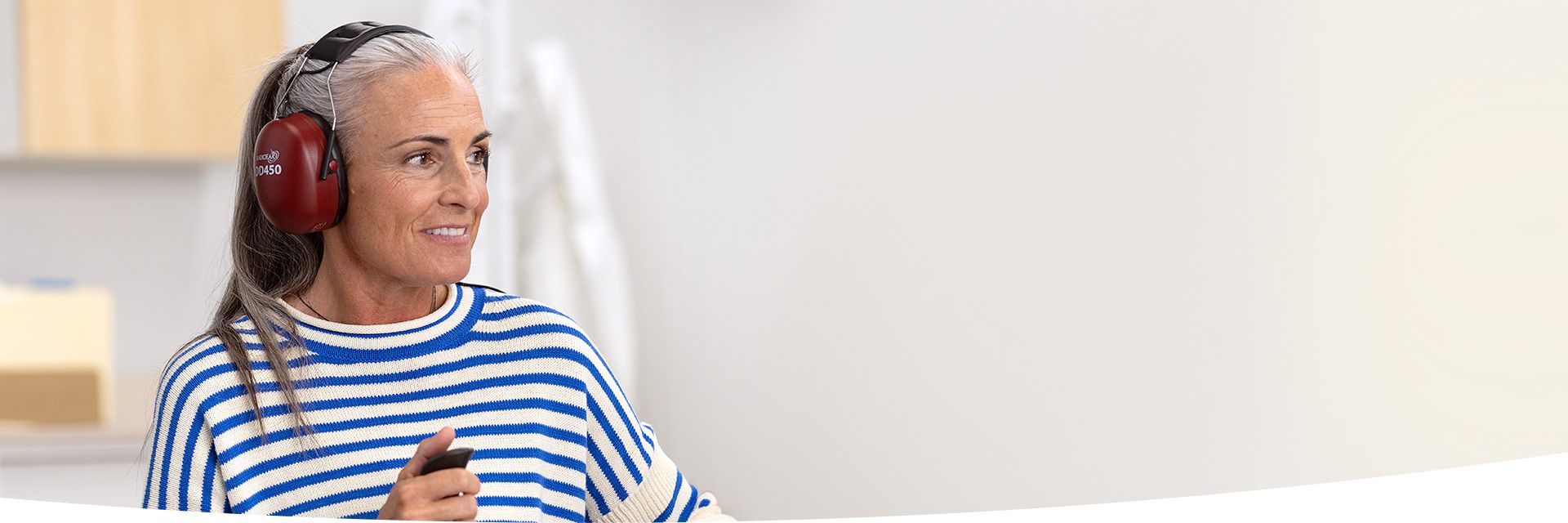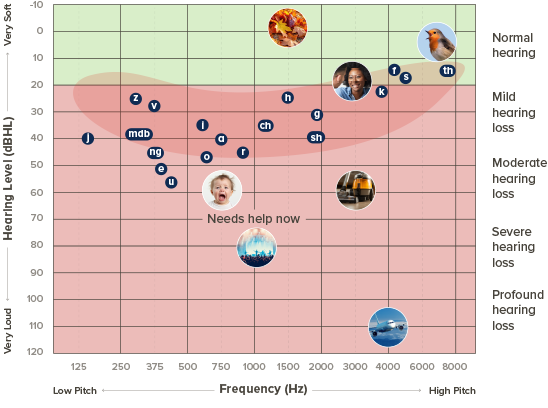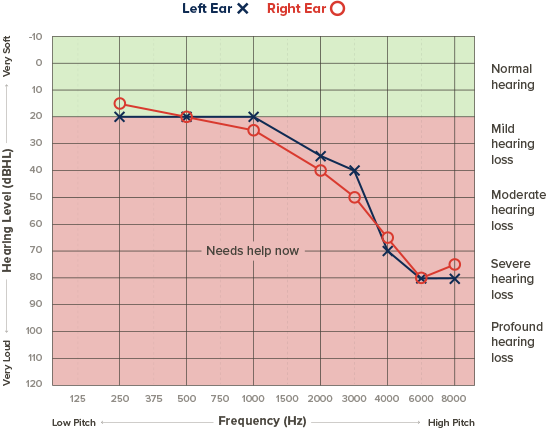Understanding your hearing test results
After your hearing test, your hearing care professional will review
your results with you. They’ll explain if your hearing is in the normal
range or if you have hearing loss.
Your hearing care professional will explain what sounds may be
difficult for you to hear, the type and degree of hearing loss (if
present), and how it may be affecting your daily life. They’ll also
discuss if and what hearing solutions could help.
Looking at your audiogram is an important step toward better hearing
and communication. With expert help, you’ll understand your hearing
health and what to do next.
According to the World Health Organization, a normal hearing range
means being able to hear sounds between 0 and 20 decibels (dB).1
If
you have difficulty hearing sounds within that range, you may have
some hearing loss.
Remember: Everyone's hearing is different. Even people the same
age or background can have different results. Your hearing is as
unique as your fingerprint!
Types of hearing loss








